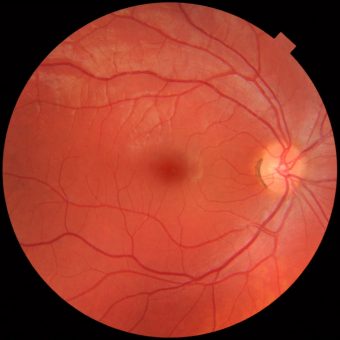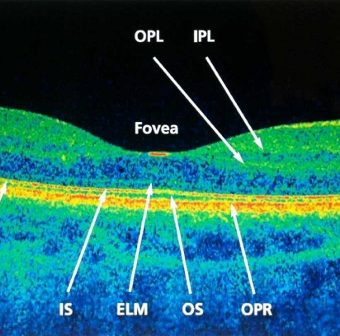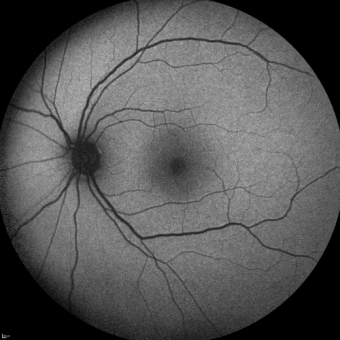As professionals, all optometrists go through standard schooling to achieve their optometric doctorate. We would like to think that “all optometry clinics are the same” but unfortunately they are not. All optometrists offer “comprehensive eye exams” but what’s included in that? Are you getting the same service at every office you visit? What’s different and why do the exam fees range so much?
 As far as what IS included in all exams, you don’t need to worry about not having the health checked or your prescription updated – all optometrists will do this. The difference you may experience is the equipment that each office chooses to equip themselves with. Not all offices will have a fundus camera, OCT, or visual field testing device. These devices are what sets different offices apart. It’s not that offices without this equipment are conducting “incomplete” eye exams, it’s that they simply don’t have the extra equipment to do further testing.
As far as what IS included in all exams, you don’t need to worry about not having the health checked or your prescription updated – all optometrists will do this. The difference you may experience is the equipment that each office chooses to equip themselves with. Not all offices will have a fundus camera, OCT, or visual field testing device. These devices are what sets different offices apart. It’s not that offices without this equipment are conducting “incomplete” eye exams, it’s that they simply don’t have the extra equipment to do further testing.

The fundus camera allows an optometrist to take pictures of the back of the eye to better document changes and detect eye disease. If there is a disease process that requires monitoring, this is a great tool for visual documentation and for education purposes. Fundus photos do not take the place of dilated fundus examinations though – they are not able to photograph out to the outer edges of the retina. Some offices will choose to include this testing in their exam fee or charge extra as a choice for patients to have the testing done.

OCT (optical coherence tomography) is a tool that aids in disease detection by allowing optometrists to look at the individual layers of the retina – which is otherwise not possible by any other means. An optometrist is not able to see the individual layers simply by looking directly at the retina. The OCT is ideal for locating separation in layers, leaking of fluid, or monitoring disease progression/improvement (ie. glaucoma, macular degeneration, or diabetic retinal disease).
Visual field testing devices test a person’s field of view (most often used to see where the limitations are). It is often used in glaucoma monitoring since there are distinct patterns of vision loss that develop. Other ways visual field testing is utilized is for driver’s licensing testing to ensure the applicant does not have limited fields, to monitor patients on plaquenil, or to see the extent of damage after a patient has had a stroke.
 Other additional tests include Fundus Autofluorescence (FAF) that is newer technology that utilizes the reflection of certain wavelengths of light by molecules in the retina. It helps to evaluate the metabolic function of the retina. It is used in the early detection of diseases by seeing where the resulting image lights up more or less than normal. For certain diseases, functional changes start occurring before a clinician is able to see structural changes – this is where FAF is most useful. What is seen through FAF is not detectable through regular fundus photography or during funduscopic examination.
Other additional tests include Fundus Autofluorescence (FAF) that is newer technology that utilizes the reflection of certain wavelengths of light by molecules in the retina. It helps to evaluate the metabolic function of the retina. It is used in the early detection of diseases by seeing where the resulting image lights up more or less than normal. For certain diseases, functional changes start occurring before a clinician is able to see structural changes – this is where FAF is most useful. What is seen through FAF is not detectable through regular fundus photography or during funduscopic examination.
At Wink (your local Burnaby optometry clinic) we made the decision to invest in additional special equipment to better serve our patients. As part of our eye exams, we include fundus photography and OCT scanning. FAF is also available, but is only done when the optometrist requires further testing as the bright light required for this testing can be bothersome to some patients. We feel that over the years, the awareness of how important eye health is has declined among the general population – we take our vision for granted. By investing in our patients, we want to bring awareness back to how important our eyes are to our daily lives and how we should be more diligent in preserving our vision. Many diseases that occur in the eyes are not things we can see or feel coming so it is imperative that people receive regular eye exams at least every 2 years. Come and visit Wink Optometry conveniently located beside the Metrotown skytrain station in Burnaby to learn more about vision preservation today!



Hi there! This is kind of off topic but I need some
guidance from an established blog. Is it very hard to set
up your own blog? I’m not very techincal but I can figure things out
pretty fast. I’m thinking about making my own but I’m not sure where to begin. Do you have any points or suggestions?
With thanks
It’s a little late, but to successfully blog, you need regular and interesting content that is of relevant topic to the readers you wish to write for. Engaging with other blogs will also help. Hope that helps!
Brilliant post Natasha, as an optometrist I completely agree that there is a gulf of difference between eye examination providers, even though we are all trained to the same level. It sounds like your practice is able to stand out from the crowd though – we should all be striving to achieve an eye exam to the standard you have described.
Thank you! Greatly appreciate your input 🙂 Do you own your own practice as well?
I simply want to tell you that I am just new to blogs and absolutely savored this blog. Likely I’m planning to bookmark your website . You absolutely come with exceptional stories. Thanks for sharing with us your web site.